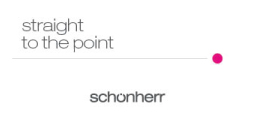A popular practice among consumers under the age of 30 is to purposely search for better-value alternatives to items from well-known brands. Started to gain followers on social media, this idea has become a phenomenon, with entrepreneurs setting up e-stores, boldly claiming to sell dupes (short for "duplicates"). Others sell their own products "inspired" by current trends. And while supply is generally justified by demand, it raises the question of whether duplicates are an innocent more affordable alternative or an unfair profiting on the back of another. Public opinion is divided, but we are going to examine what the law says.
In EU, protection against imitation is provided in three directions - by protecting the signs used to identify products (trademark), by protecting their visual appearance (industrial design) and by prohibiting unfair competition through imitation.
Trademark and industrial design registration provide the possibility to prohibit their use by others, but duplicates are distributed under their own trademark, and their design often does not infringe a competitor's one and is sometimes even protected itself. Here, the answer should be searched for in unfair competition litigation practice.
What do the law and practice say?
The prohibition of unfair competition through imitation is one of the most common reasons for referrals to the Bulgarian Commission for Protection of Competition. The law prohibits the offering of goods with an appearance, packaging, marking, name, or other features that mislead or are likely to mislead as to the origin, manufacturer, seller, features and other essential characteristics of the goods in a way that may harm the interests of competitors. It is sufficient that there is a potential risk of harm to the interests of competitors, rather than that such harm has occurred, for the prohibition on imitation to be infringed.
We would also point out the following: in unfair competition disputes, imitation is seen through the eyes of the consumer. It is through their behaviour that the interests of the trader/manufacturer may be harmed.
For there to be an infringement, consumers must be misled. For the consumer to be misled, there must be similarity in those elements of the two products which are distinctive and memorable and which the product or the manufacturer is associated with in the consumer's perception.
Does imitation mean copy-paste?
No. The devil is in the details.
Even in the absence of absolute identity between two products, confusion could in practice be caused in the perception of the end user. In practice, both the design as a whole and its main distinctive elements, which can play a significant role in orienting the consumer among the products, are relevant in assessing whether there is imitation. Imitation exists not only where the appearance of a product reproduces literally the product of a competitor, but also where individual elements of the product imitate elements of the appearance of the competitor's product in such a way as to mislead the consumer. Illustrative examples of such a practice are a decision of the CPC according to which „the use by a retailer of close and/or similar elements (on women's dresses) is capable of shifting attention away from the differences present, which in this case are not particularly significant and leave an overall impression of similarity“, as well as recent decisions in packaging similarity disputes where similarity in a dominant element leads to the possibility of consumer confusion as to the manufacturer, regardless of the fact that each company's registered trademarks are used on the packaging
In summary, if the similarities between the duplicate and an already well-known product are in elements that consumers know and associate with the well-known product, the differences between them will be of lesser importance
Does it matter who we copy?
For sure!
For a duplicate to be successful, it must indicate which product it is similar to. The better known, the better for the trader. Except for the competition authorities it's just the opposite. The better known the imitated product, the worse it is for the imitator. The notoriety of a product is an important element for the manufacturer/tradesman to benefit from the right of protection against copying and is always examined.
Does the price matter?
Always.
A seemingly large price difference could place the two products in different product markets, eliminating the possibility of misleading the consumer. But according to the court, where the similarities between two products are significant, unfair competition should not be excluded on the basis of price alone. The similarities in the products, supplemented by the significantly lower price of the imitating product, would lead to a change in the consumer's market behavior in favor of the similar product not because of its qualities, but precisely because of its similarity to the well-known product, which also constitutes unfair competition. That is the conclusion in a dispute concerning the imitation of a well-known toy, consisting mostly of interlocking plastic bricks. It should be noted that the imitating products were distributed under their own trademark, with registered designs.
Okay, but dupes are not misleading. It's clearly stated which product they are close to.
Seems fair, but it's an own goal.
This practice under the law is prohibited comparative advertising. This statement is not meant to highlight the qualities of the product being sold, only that it resembles another in the hope, or rather guarantee, that it will lead to sales, and... a fine, of course.
Instead of conclusion - advice
"Anything touched by the human hand has a design" You can read this on the EU Intellectual Property Office (EUIPO) website.
And with the disclaimer that each competition dispute must be dealt with separately, creativity is tolerated and protected by European law. The drive to make products meet current demand should not be put ahead of the search for original ideas. The advantages of the product itself should be highlighted in production and sales, rather than being made dependent on the fame of another.
By Vladimir Petrov, Associate, Gugushev & Partners, PONTES




